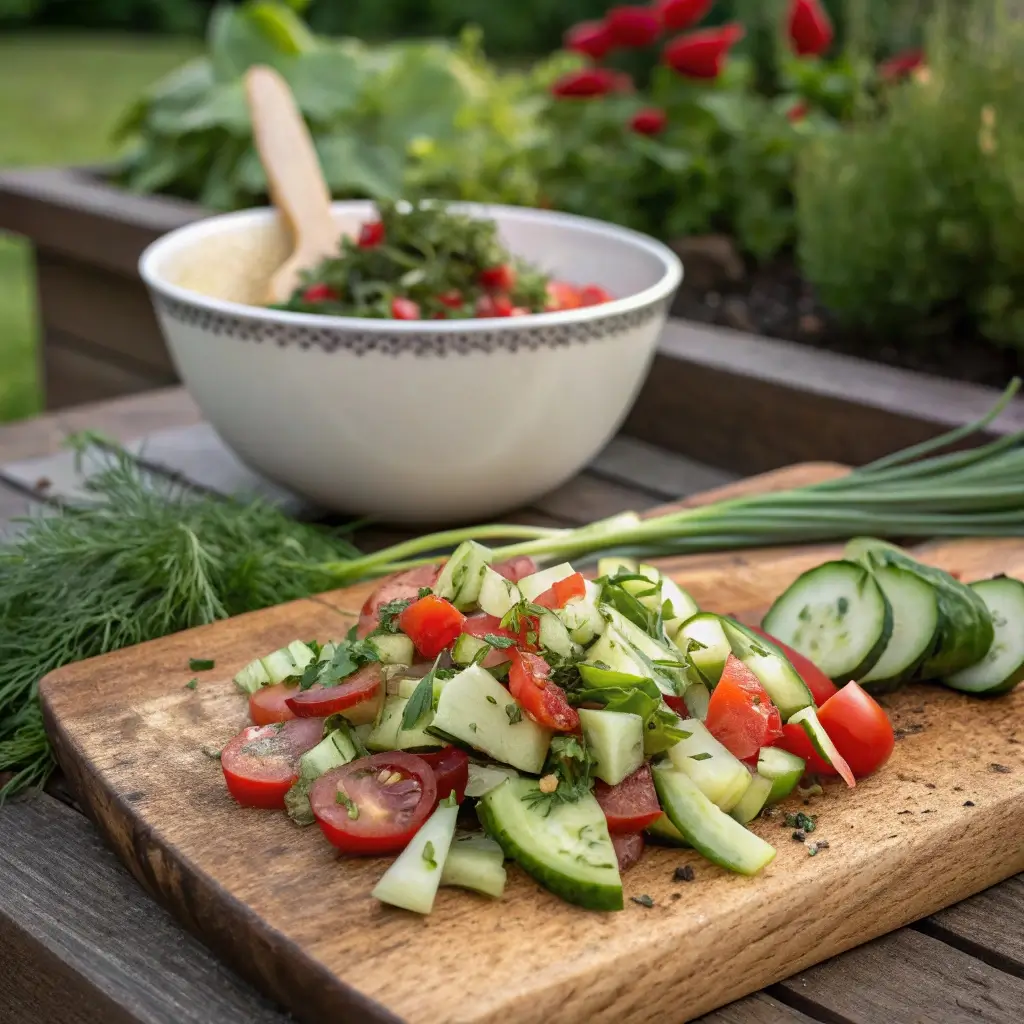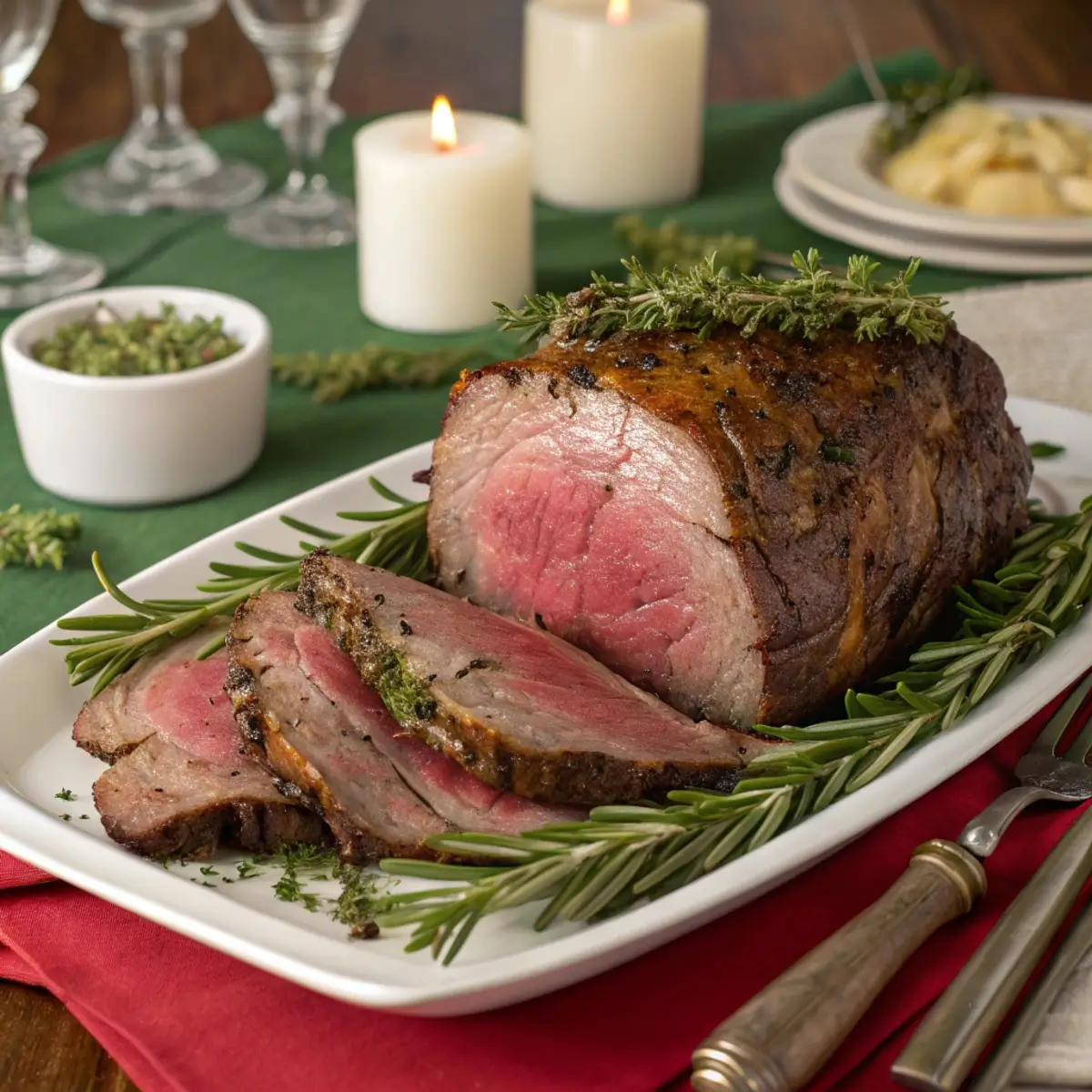Table of Contents
- 1 🌱 Why a Zero Waste Salad?
- 2 🥒 What Makes This Salad “Zero Waste”?
- 3 🍅 Ingredients: Flexible, Seasonal & Waste-Free
- 4 👨🍳 How to Make Zero Waste Garden Cucumber Tomato Salad
- 5 🧺 Garden-to-Table: Make It Your Own
- 6 🌍 Why This Salad Helps the Planet
- 7 📊 Nutrition Snapshot (Per Serving – Serves 4)
- 8 ❓FAQs About Zero Waste Salads
- 9 🌿 Final Thoughts: Eat Fresh, Waste Less
🌱 Why a Zero Waste Salad?
In a time where food waste is a growing concern, it’s empowering (and satisfying) to make use of everything the garden or fridge gives you. This Zero Waste Garden Cucumber Tomato Salad is a celebration of sustainability, seasonality, and simple ingredients—using every bit of your produce, from cucumber peels to herb stems.
It’s not just a salad. It’s a statement:
♻️ Less waste.
🌿 More flavor.
🍅 Full of garden-fresh goodness.
Best of all, it’s free from pork, bacon, dairy, wine, or alcohol—100% plant-based and planet-friendly.
🥒 What Makes This Salad “Zero Waste”?
Zero waste cooking means repurposing, rethinking, and reducing waste at every step. In this recipe, we:
-
Use cucumber skins for texture
-
Chop tomato cores and include them in the mix
-
Use herb stems (like parsley, basil, or cilantro)
-
Save onion tops for a homemade vinaigrette
-
Add beet greens or radish leaves as bonus greens if available
It’s a salad that evolves with what’s growing or what’s left in your fridge drawer.
🍅 Ingredients: Flexible, Seasonal & Waste-Free
Base Veggies (use what you have):
-
2 cucumbers (keep peels if organic), sliced
-
2 cups tomatoes (cherry, heirloom, or any ripe variety), chopped
-
¼ red or white onion, thinly sliced
-
Handful of carrot tops, beet greens, or radish greens, chopped
-
2 tablespoons chopped herb stems (parsley, cilantro, basil)
-
Pinch of salt and black pepper
Zero Waste Vinaigrette:
-
3 tablespoons olive oil
-
2 tablespoons apple cider vinegar or lemon juice
-
1 teaspoon Dijon mustard (wine-free) or mustard powder
-
1 teaspoon honey or agave
-
1 tablespoon minced onion tops or green ends of scallions
-
Optional: zest of lemon or cucumber skin ribbons for garnish
♻️ Pro Tip: Store veggie scraps like herb stems and onion skins in a container in the fridge or freezer for making broth later.
👨🍳 How to Make Zero Waste Garden Cucumber Tomato Salad
Step 1 – Wash and Chop Thoughtfully
Wash all vegetables thoroughly, especially if you’re keeping peels. Slice cucumbers, chop tomatoes (include juicy cores), and thinly slice any onion or greens you’re using.
Step 2 – Create the Dressing
In a small bowl or jar, mix olive oil, vinegar or lemon juice, mustard, honey/agave, and chopped onion tops. Whisk or shake until emulsified.
Step 3 – Toss and Let Rest
Add chopped vegetables and herbs to a mixing bowl. Pour in the dressing and toss gently to combine. Let the salad sit for 5–10 minutes to let flavors meld.
🍋 Zero-waste tip: Use citrus zest from your lemon before juicing—great for brightness and aroma!
🧺 Garden-to-Table: Make It Your Own
The beauty of a zero waste salad is flexibility. Use what you’ve got—and don’t overthink it.
Great Add-Ins (if you’ve got extras):
-
Leftover cooked grains (quinoa, couscous, farro)
-
Steamed or roasted leftover veggies (zucchini, green beans, corn)
-
Chopped soft stems (broccoli leaves, celery tops)
-
Leftover pickled veg or olives from a jar
Keep It Fresh:
-
Eat it immediately or within 24 hours
-
Store extra dressing for up to 5 days in the fridge
-
Use salad leftovers in a wrap or on top of hummus toast
🌍 Why This Salad Helps the Planet
Food waste accounts for 6–8% of global greenhouse gas emissions. By repurposing what would otherwise be compost or trash, you’re making a real environmental impact:
✅ Reduces landfill waste
✅ Saves money
✅ Conserves water used in food production
✅ Celebrates homegrown, local, or market veggies
🌱 Sustainability starts in your kitchen—with small habits and delicious outcomes like this salad.
📊 Nutrition Snapshot (Per Serving – Serves 4)
| Nutrient | Amount (Approx.) |
|---|---|
| Calories | 140 |
| Carbohydrates | 7g |
| Protein | 2g |
| Fat | 12g |
| Fiber | 3g |
| Sugar (natural) | 4g |
| Sodium | 140mg |
🌿 Plant-based, dairy-free, gluten-free, Whole30 (omit sweetener), keto-friendly
❓FAQs About Zero Waste Salads
Can I really eat cucumber peels and herb stems?
Yes! If they’re washed well (preferably organic), cucumber peels add crunch and fiber, and herb stems are flavorful and nutrient-rich.
What if my veggies are slightly wilted?
Perfect! Use slightly wilted greens or herbs—just trim off any slimy or overly soft bits. Toss them in the dressing to revive their texture.
How do I compost what I don’t use?
Great question! Compost peels, cores, and scraps you don’t use. Avoid adding oils or vinaigrette leftovers to compost piles—stick with raw produce only.
Can I make this ahead of time?
Yes. This salad tastes great after sitting for 15–30 minutes. If making ahead, keep the dressing separate and add just before serving to preserve crunch.
What other zero waste recipes go well with this?
-
Veggie scrap broth
-
Carrot top pesto
-
Stir-fried rice with leftover veggie bits
-
Chopped salad wraps using wilting greens
🌿 Final Thoughts: Eat Fresh, Waste Less
This Zero Waste Garden Cucumber Tomato Salad reminds us that delicious meals don’t have to come with a footprint. By using what you have, embracing imperfection, and treating every scrap as potential, you’re feeding your body and respecting the planet.
This summer (or any season), make your garden harvest go further. Eat fresh, waste less, and feel good doing it. 🌎🥗♻️





